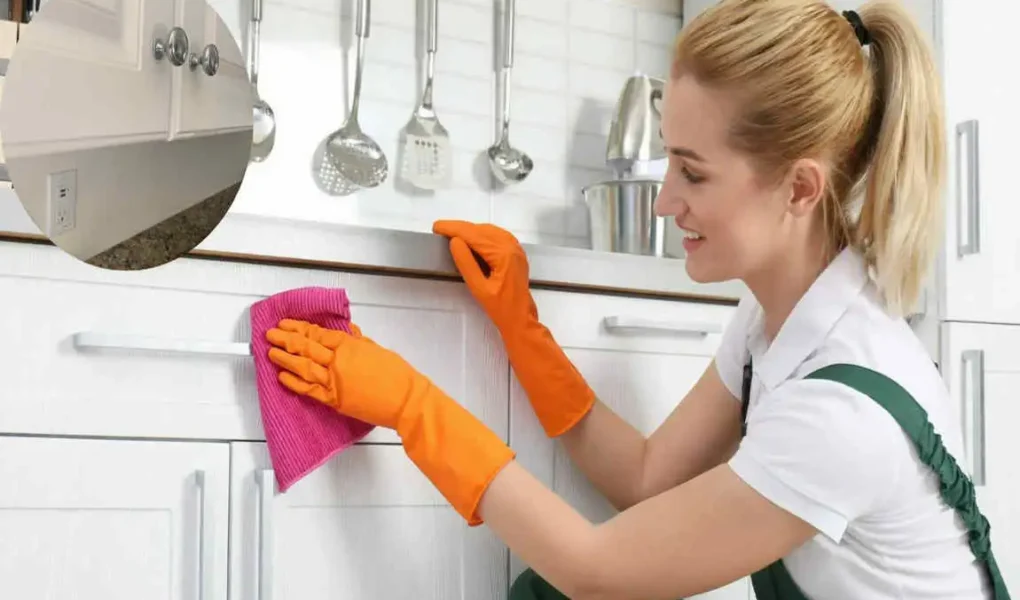Steam marks on kitchen cabinets are a common nuisance that many homeowners face. These unsightly marks can detract from the beauty of your house kitchen, making your cabinets appear worn and aged. But what exactly causes these marks, and why do they matter?
What Are Steam Marks on Kitchen Cabinets?

Understanding Steam Marks: Causes and Symptoms
Steam marks are spots or patches that appear on kitchen cabinets after exposure to steam and moisture. Unlike simple dirt or grease stains, these marks typically appear as cloudy or white discolorations. Sometimes they seem like water spots, but steam marks often penetrate the finish, creating a haze that dulls the cabinet surface.
How Steam Marks Differ from Other Stains
It’s essential to distinguish steam marks from other common cabinet blemishes:
- Grease stains: These are sticky or oily and usually darker in color.
- Water stains: Often irregular and caused by splashes or leaks, these may have rings or drip patterns.
- Scratches or chips: Physical damage differs from steam marks, which affect the clarity of the finish.
Materials Affected by Steam Marks
- Wood cabinets: Natural wood is especially vulnerable since moisture can seep into the grain.
- Laminate cabinets: While more resistant, steam can still cause bubbling or discoloration.
- Painted surfaces: Paint may blister or lose its smooth finish after exposure to steam.
Common Causes of Steam Marks on Kitchen Cabinets
Kitchen Steam from Cooking and Appliances
When boiling pots, steaming vegetables, or running your dishwasher, steam rises and hits your cabinets. This continuous exposure traps moisture on the surfaces, leading to the formation of those cloudy marks.
Poor Ventilation and Humidity Buildup
Kitchen design without adequate exhaust fans or range hoods allow steam to linger, which can be hazardous to health. High humidity levels make it easier for moisture to settle on cabinets and cause damage over time.
Proximity to Steam Sources
Cabinets closest to stoves, sinks, or dishwashers tend to develop steam marks faster. If steam has no escape path, it condenses on nearby surfaces, leading to steam damage.
Effects of Neglecting Steam Damage
Ignoring steam marks can lead to:
- Permanent discoloration
- Cabinet warping or swelling
- Peeling finishes
- Mold and mildew growth in extreme cases
How to Identify Steam Marks on Your Kitchen Cabinets
Visual Signs to Look For
- Discoloration: White or cloudy patches that don’t wipe away easily.
- Water spots: Circular marks or stains that suggest moisture buildup.
- Loss of shine: Cabinets may appear dull or foggy where steam has impacted them.
Texture Changes and Warping
Press gently on the cabinet surface. If it feels soft, swollen, or uneven, this could indicate deeper steam damage beyond surface stains.
Differentiating Steam Marks from Other Stains
- Grease stains feel oily and attract dust.
- Water stains usually have drip patterns.
- Steam marks form a foggy or milky film.
Step-by-Step Guide: How to Remove Steam Marks from Kitchen Cabinets

Cleaning Methods Based on Steam Mark Severity
For Light Steam Marks
Kitchen features Mix mild soap with warm water. Dampen a microfiber cloth and gently wipe the cabinets. If stains persist, try a 1:1 mixture of white vinegar and water. Dry immediately with a clean cloth to prevent new marks from forming. Finish by polishing with olive oil or lemon oil for wood cabinets.
For Moderate Steam Marks
Create a paste with baking soda and water. Apply gently to the steam marks and scrub in circular motions. Alternatively, rub a small amount of non-gel toothpaste on the spots. Wipe clean with a damp cloth and dry thoroughly. Use olive oil or lemon oil to replenish cabinet shine.
For Severe or Deep Steam Marks
Place a clean cloth over the mark. Heat an iron to a medium setting (without steam) and press it gently onto the fabric for a few seconds. The heat helps evaporate trapped moisture beneath the finish. For deep damage, light sanding followed by refinishing may be needed. If unsure, call a professional refinisher to avoid further damage.
Precautions When Removing Steam Marks from Cabinets
- Avoid harsh chemicals like bleach or ammonia, as they can strip finishes or discolor cabinets.
- Test cleaning solutions in an inconspicuous area first to ensure no damage occurs.
- Ensure proper ventilation during cleaning to avoid inhaling fumes.
- Avoid scrubbing aggressively; gentle pressure helps prevent surface damage.
How to Prevent Steam Marks on Kitchen Cabinets in the Future
Install Proper Ventilation
Range hoods and exhaust fans are your best defense against steam buildup. Ensure they are functioning correctly and use them regularly house design.
Signs It’s Time to Replace
- Cabinets are warped or swollen to the point of being beyond repair.
- The paint or finish is peeling extensively.
- Persistent mold or mildew growth.
- Structural damage is causing cabinets to sag or loosen.
Cost Considerations
Repairing severe damage can be costly and time-consuming. Sometimes replacement is more economical in the long run.




